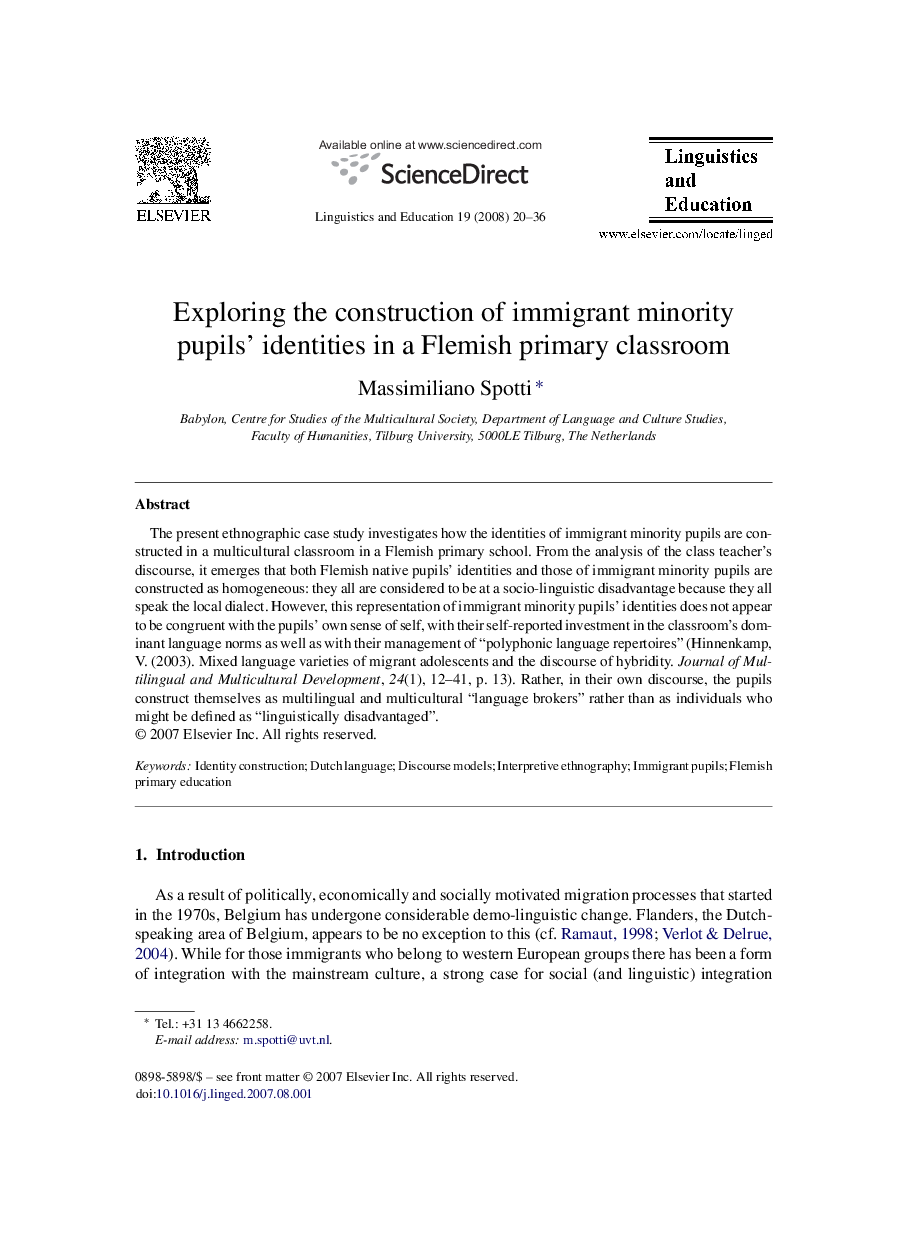| Article ID | Journal | Published Year | Pages | File Type |
|---|---|---|---|---|
| 366474 | Linguistics and Education | 2008 | 17 Pages |
The present ethnographic case study investigates how the identities of immigrant minority pupils are constructed in a multicultural classroom in a Flemish primary school. From the analysis of the class teacher's discourse, it emerges that both Flemish native pupils’ identities and those of immigrant minority pupils are constructed as homogeneous: they all are considered to be at a socio-linguistic disadvantage because they all speak the local dialect. However, this representation of immigrant minority pupils’ identities does not appear to be congruent with the pupils’ own sense of self, with their self-reported investment in the classroom's dominant language norms as well as with their management of “polyphonic language repertoires” (Hinnenkamp, V. (2003). Mixed language varieties of migrant adolescents and the discourse of hybridity. Journal of Multilingual and Multicultural Development, 24(1), 12–41, p. 13). Rather, in their own discourse, the pupils construct themselves as multilingual and multicultural “language brokers” rather than as individuals who might be defined as “linguistically disadvantaged”.
